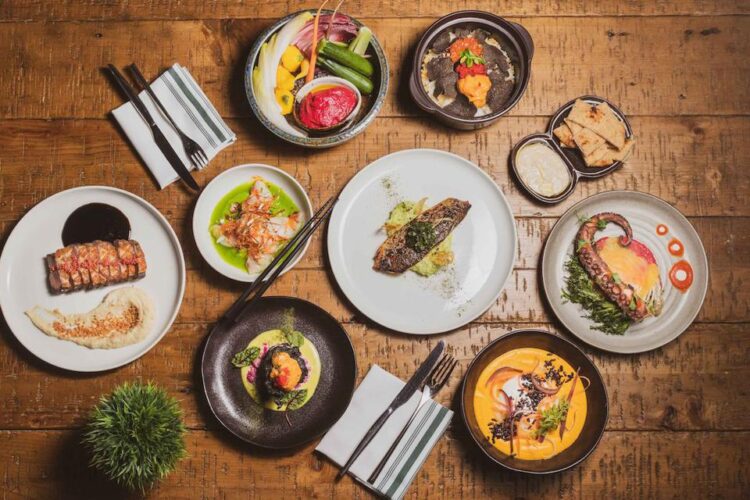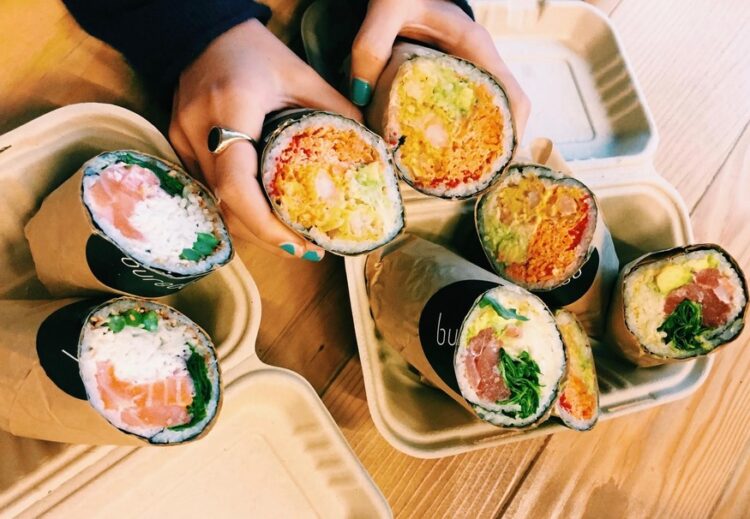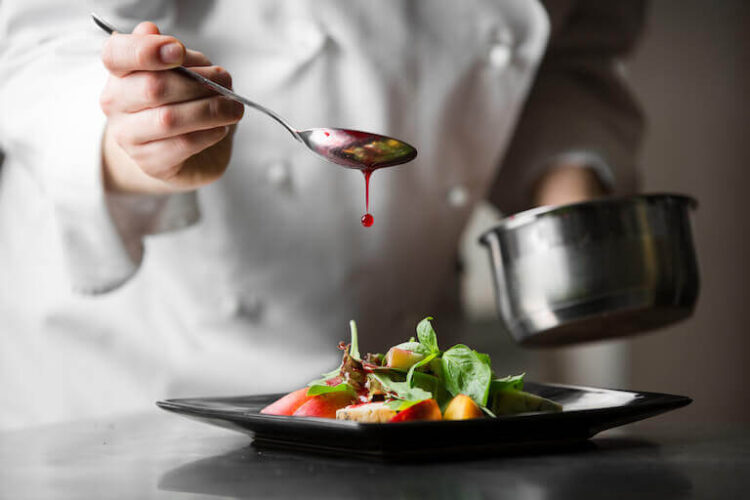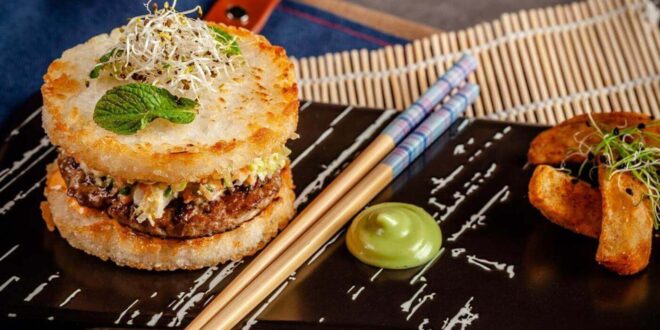Food has long been a means of cultural exchange and fusion, and the evolution of fusion cuisine is a testament to the rich history of global trade and migration. From the earliest days of human civilization, people have traded goods, including spices, herbs, and recipes, resulting in a blending of culinary traditions.
Origins of Fusion Cuisine
The mixing of culinary traditions can be traced back to ancient times, when trade routes between the Middle East, Europe, and Asia brought together a diverse range of ingredients and cooking methods.
In the Middle Ages, the Silk Road allowed for the exchange of spices, rice, and other ingredients between the East and West, leading to the blending of flavors and cooking techniques. Arguably the most representative example of an indigenous product transported by sailors from one continent to another during the Middle Ages was the tomato. It was the Spanish conquistador Hernán Cortés who brought the first tomato seeds from Mexico to Spain.
As people migrated and settled in new lands, they brought their own culinary traditions with them, which over the years were blended perfectly with the local cuisine to create entirely new dishes.
Influences of Different Cultures

Specific cultures and regions have played a significant role in the development of fusion cuisine. For example:
- Brazilian cuisine is a fusion of African and Portuguese influences, resulting in dishes such as feijoada, a hearty stew made with black beans, pork, and beef.
- Argentinian gastronomy has developed as a blend of different cultures, mainly European and from Middle East countries. Italian and Spanish immigrants as the vast majority shaped the evolution of cuisine along the 20th century. But other cultures, like Israeli, Lebanese, and Eastern European have brought their gastronomy traditions as well. It is common to find restaurants offering Italian fugazza, varenyky (also called pierogi) from Ukraine, and the ever-present Valencian Paella.
- In the United States, fusion cuisine has been influenced by a variety of cultures, including Asian, Latin American, and European. Some popular examples include Korean tacos, sushi burritos, and fusion pizzas with toppings such as curry and paneer (a typical Indian soft milky cheese).
The Evolution of Fusion Cuisine
As technology, travel, and globalization have increased, fusion cuisine has evolved along with it. With greater access to ingredients from around the world, chefs are experimenting with new flavor combinations and techniques, resulting in innovative and exciting dishes.
During the last few years, the rise of social media has also played a key role in the evolution of fusion cuisine, as food bloggers and influencers share their favorite fusion dishes with a wider audience, which allows people from all over the world to get to know ingredients and cooking techniques almost unknown until a couple of decades or so ago.
Gastronomy enthusiasts and food lovers find these exotic cuisines highly appealing to experiment within their own home kitchens. And it doesn’t take long for innovative restaurant chefs to include new dishes in their own menus.
Famous Examples

Some of the most well-known examples of fusion cuisine include:
- Sushi burritos: A fusion of Japanese and Mexican cuisine, typically made with sushi rice, seaweed, and a variety of fillings such as avocado, cucumber, and raw fish.
- Kimchi tacos: A fusion of Korean and Mexican cuisine, typically made with marinated beef or pork, kimchi, and a variety of fresh toppings such as cilantro and lime.
- Pizza topped with curry: A fusion of Italian and Indian cuisine, typically made with a thin-crust pizza topped with tomato sauce, mozzarella cheese, and spicy curry sauce.
The Benefits of Blending
While fusion cuisine has faced some criticism, there are many benefits to this type of cooking.
- Fusion cuisine has allowed for greater creativity and experimentation in the kitchen, leading to new and exciting flavor combinations.
- It has also allowed chefs to showcase a variety of global ingredients and cooking techniques, introducing diners to new cuisines and cultures.
- Furthermore, fusion cuisine has helped to create a more diverse and inclusive food industry, where chefs and restaurants are celebrated for their unique and innovative dishes.
- Finally, fusion cuisine has also helped to promote sustainability and environmentalism by encouraging the use of local and seasonal ingredients.
Overall, fusion cuisine has a lot to offer, from exciting new flavors to increased diversity and inclusivity in the food industry. With continued experimentation and innovation, fusion cuisine is sure to remain a popular and beloved type of cooking for years to come.
Regional Variations

Fusion cuisine differs from region to region, as local ingredients and traditions influence the fusion dishes created in different places.
- In Peru, fusion cuisine has been influenced by Chinese immigrants, resulting in dishes such as Arroz Chaufa, a Peruvian-style fried rice that incorporates Chinese ingredients such as soy sauce and ginger.
- In California, fusion cuisine has been influenced by the state’s diverse population and abundant fresh produce, resulting in dishes such as Korean BBQ tacos and avocado toast with Mexican seasonings.
Arroz Chaufa ─ A Typical Example of Fusion Cuisine
During the second half of the 19th century, thousands of Chinese immigrants settled in Peru and began working on farms all along the Pacific coast. Indeed, they brought their typical customs and culinary traditions with them, and soon Peruvians began to learn about that exotic way of cooking. Over the decades, that fusion between Chinese and regional Peruvian cuisine was called chifa gastronomy.
One delicious example of fusion cuisine is Arroz Chaufa, a Peruvian dish that combines Chinese and Peruvian ingredients to create a unique and flavorful fried rice dish.
Traditionally made with leftover rice, Arroz Chaufa typically includes a combination of meat, vegetables, and Chinese seasonings such as soy sauce and ginger.
Fusion cuisine has the power to bring people together, sharing in the joy of delicious and unique flavors. And if you want to experience a fusion dish for yourself, be sure to check out the recipe for Arroz Chaufa at https://carolinarice.com/recipes/arroz-chaufa/
 Hi Boox Popular Magazine 2024
Hi Boox Popular Magazine 2024



